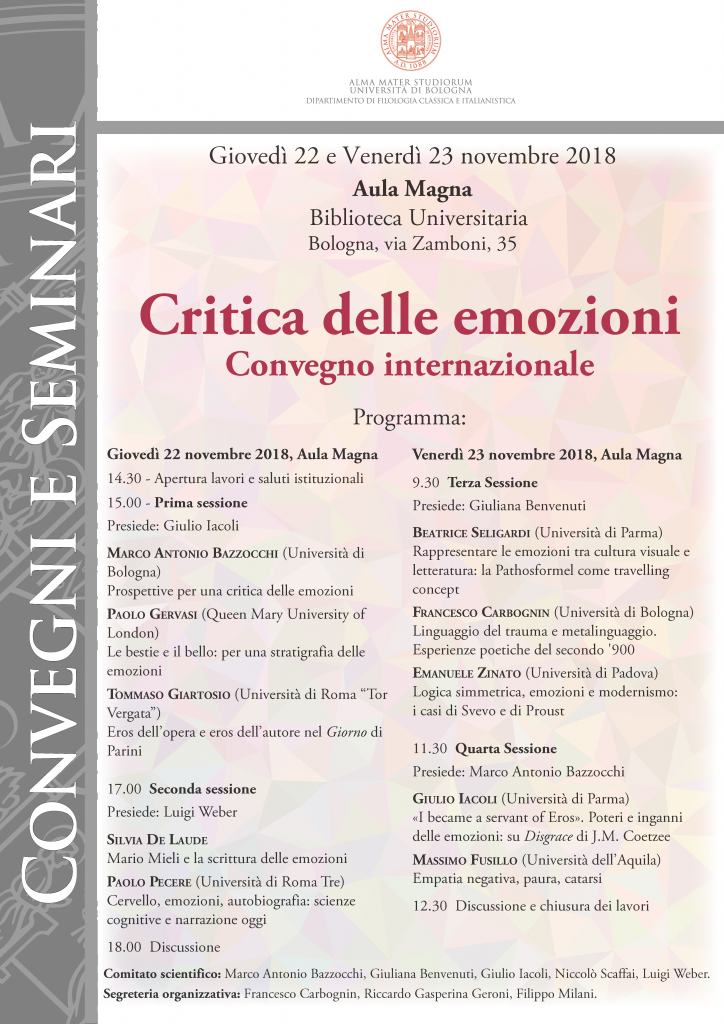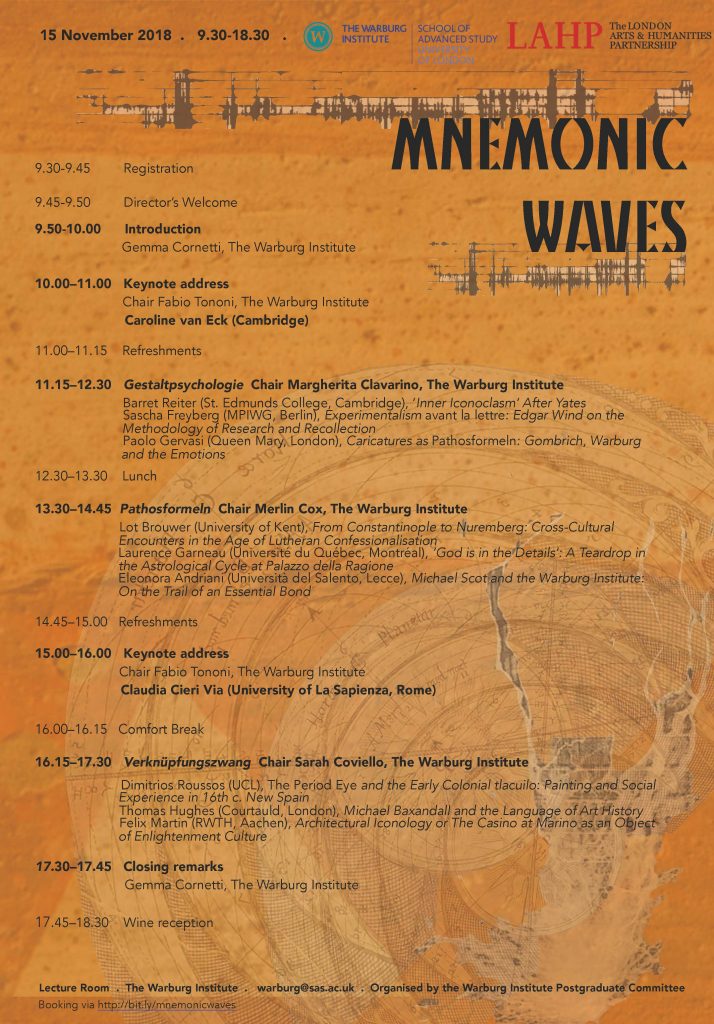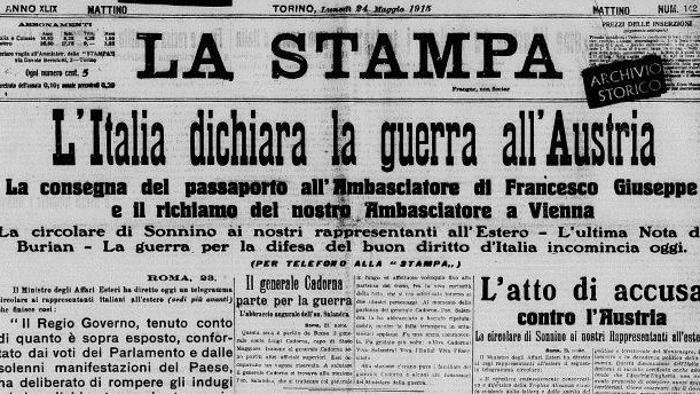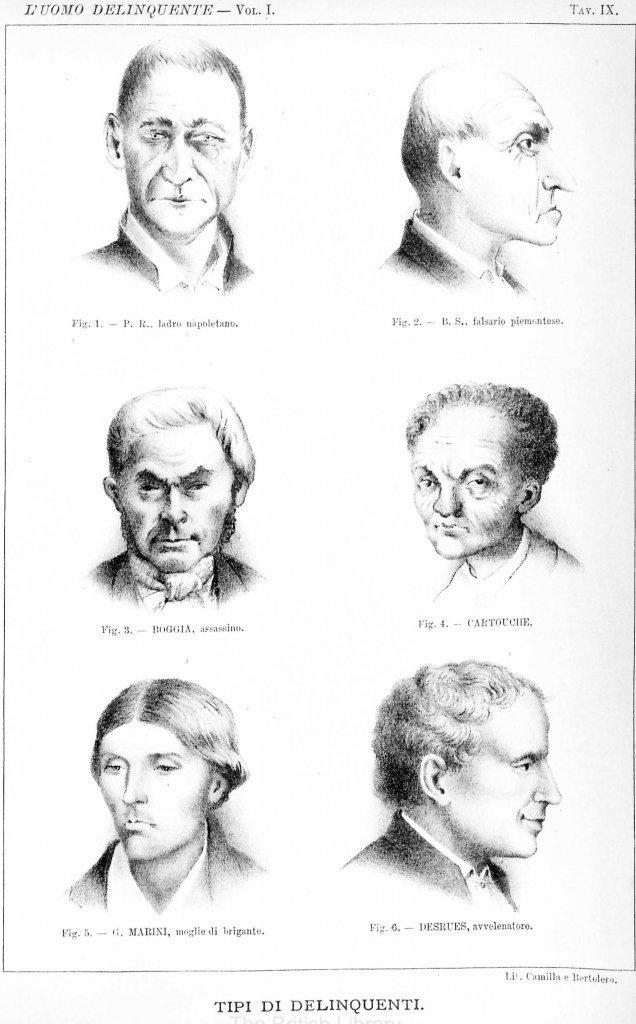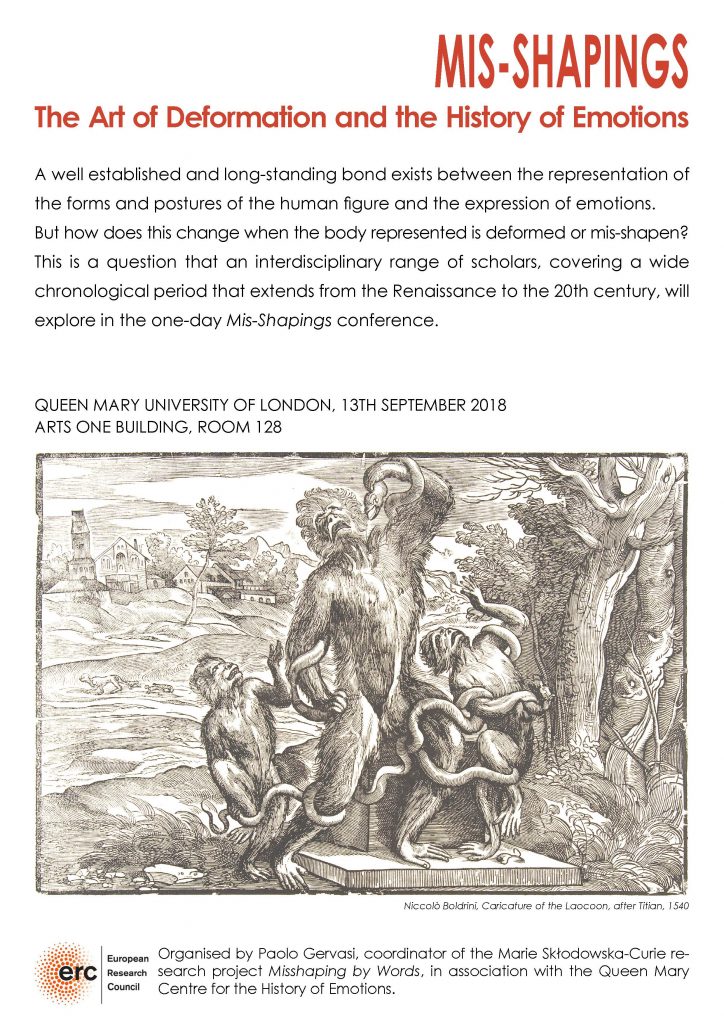Next November 22 and 23 at the Department of Classical Philology and Italian Studies of the University of Bologna, it will be held what – to my knowledge – is the first Italian conference fully dedicated to the study of emotions from a literary perspective.
Mnemonic Waves
I’m really excited to be one of the speakers of the forthcoming symposium Mnemonic Waves, to be held in London at the Warburg Institute next November 15.
Daily War. Kraus, Bontempelli, Delfini
One hundred years ago, on November 11, was signed the armistice that ended the First World War. I propose here a reflection on the relationship between the war and the media system, as elaborated in literary texts.
Nessuna poesia può essere l’immagine fedele del nostro mondo. La fedele, la tremenda immagine del nostro mondo è il giornale. È un pozzo di sapere. Non sa niente. Continua a voler sapere.
Elias Canetti, Il cuore segreto dell’orologio
Dormi ma senti frinire
remote
le rotative
rotanti nell’oscurità
per dare forma
all’aldiquà.
Valerio Magrelli, Didascalie per la lettura di un giornale
The lost canon
After the stimulating discussion on biology and literature I had on the occasion of the Internet Festival, I’ll be back in Pisa next November 11 to participate in the 16th edition of the Pisa Book Festival.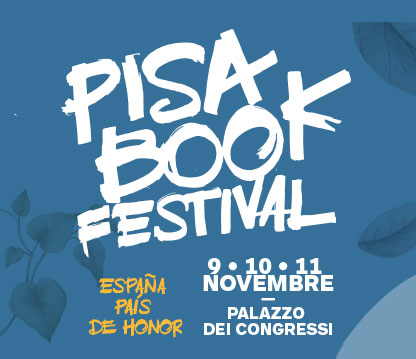 Continue reading
Continue reading
Biological intelligence
Last October 12 I participated in a roundtable titled Biological, therefore literary, intelligence, within the 8th edition of the Internet Festival.
Caricature as emotional knowledge
I publish here the talk I’ve given at the Mis-Shapings conference last September 13 at Queen Mary University.
Do we believe in physiognomy? Do we believe, as the Italian anthropologist Cesare Lombroso did, that psychological, emotional, moral attitudes of the individuals can be divined by observing the shape and features of the face?
No, of course we don’t. Physiognomy is pseudo-science, dismissed knowledge, superstition. We can’t make assumptions merely relying on appearances. Can we?
Actually, we do. We do it in our daily life, often unintentionally. But even when we look at artworks we allow us to believe in physiognomy. Continue reading
Mis-shaping visuals
Here’s the amazing poster of the Mis-Shapings conference. And the booklet with the full programme and presentation. Thanks to Livia for both!
Mis-Shapings
On Thursday 13th September 2018 will take place at Queen Mary University of London (Mile End Campus, Arts One Building, Room 128) the international conference Mis-Shapings. The Art of Deformation and the History of Emotions. I’m organising the conference, as coordinator of the Marie Skłodowska-Curie research project Misshaping by Words, in association with the Queen Mary Centre for the History of Emotions.
Concept
A well established and long-standing bond exists between the representation of the forms and postures of the human figure and the expression of emotions. But how does this change when the body represented is deformed or mis-shapen? This is a question that an interdisciplinary range of scholars, covering a wide chronological period that extends from the Renaissance to the 20th century, will explore in the one-day Mis-Shapings conference.
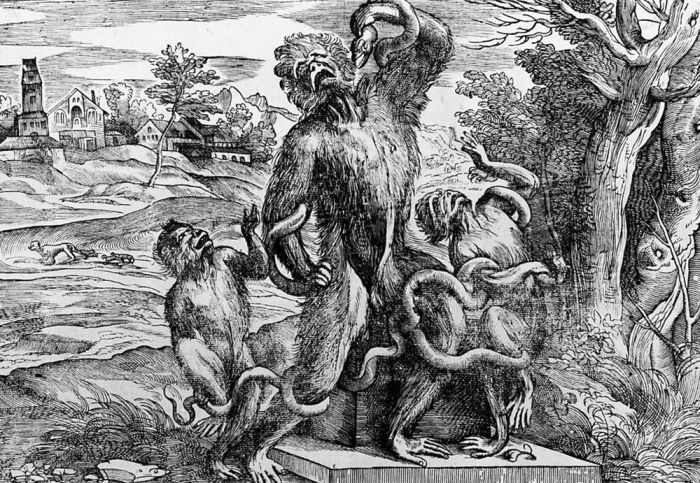
Niccolò Boldrini, Caricature of the Laocoon, after Titian, 1540
Mis-Shapings: abstracts
Here are brief descriptions of the papers that will be presented next September 13th at the Mis-Shapings conference.
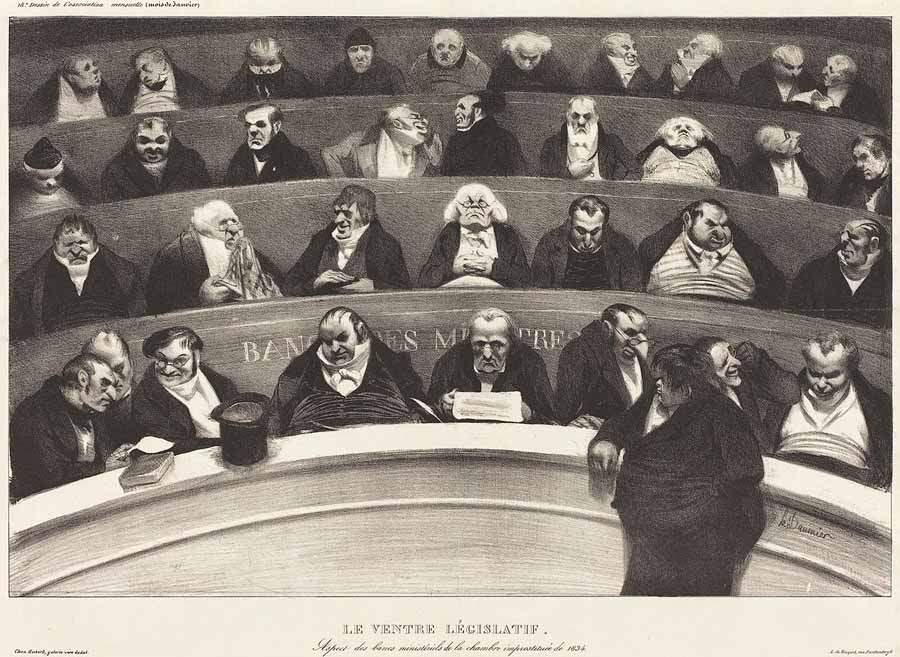
Honoré Daumier, Le ventre législatif, 1834
Mis-Shapings: speakers
Here are the bio-bibliographical profiles of the Mis-Shapings conference‘s speakers.
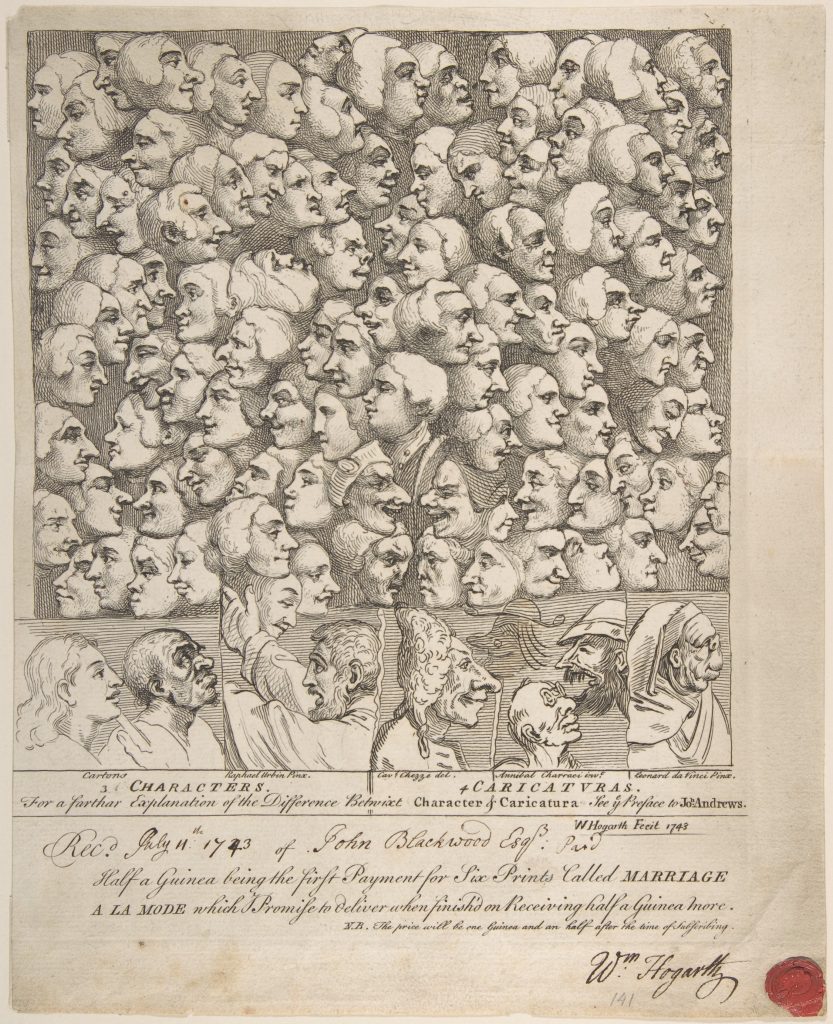
William Hogarth, Characters and Caricaturas, 1743

